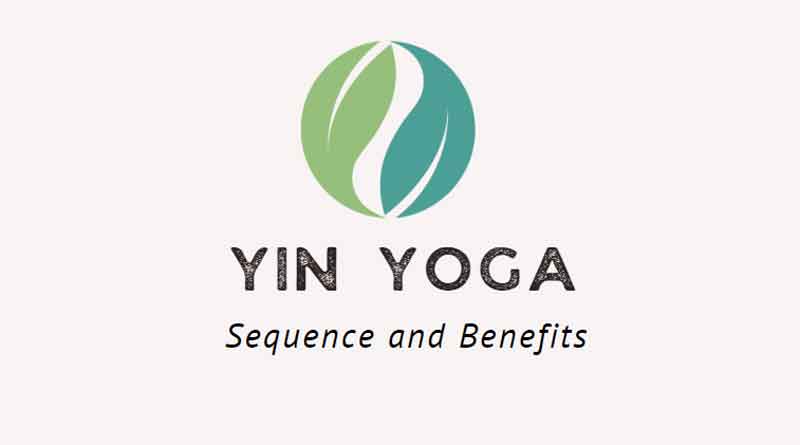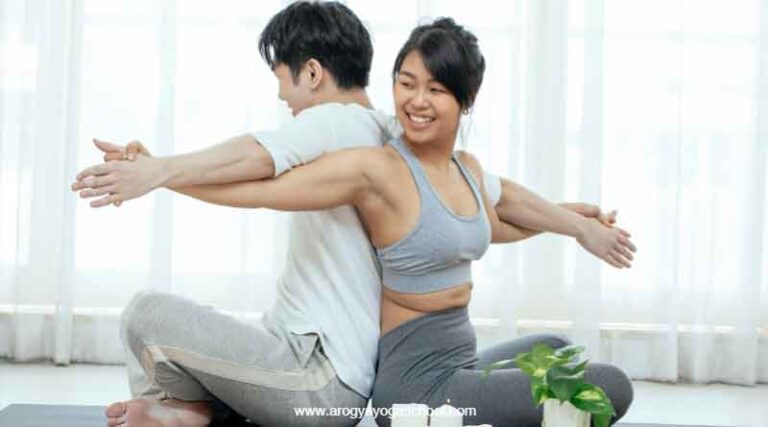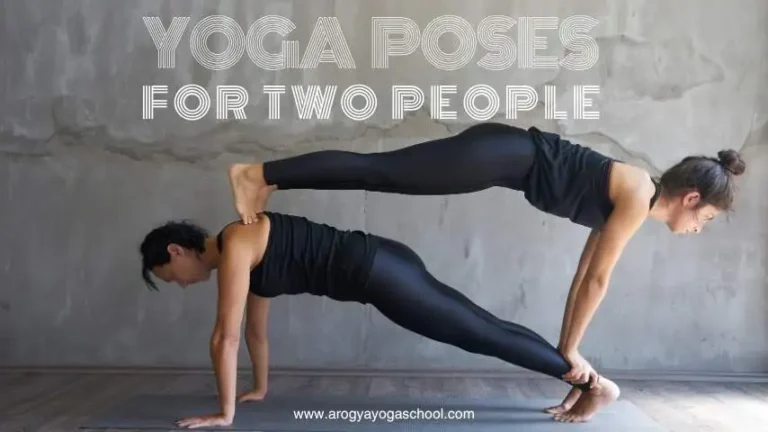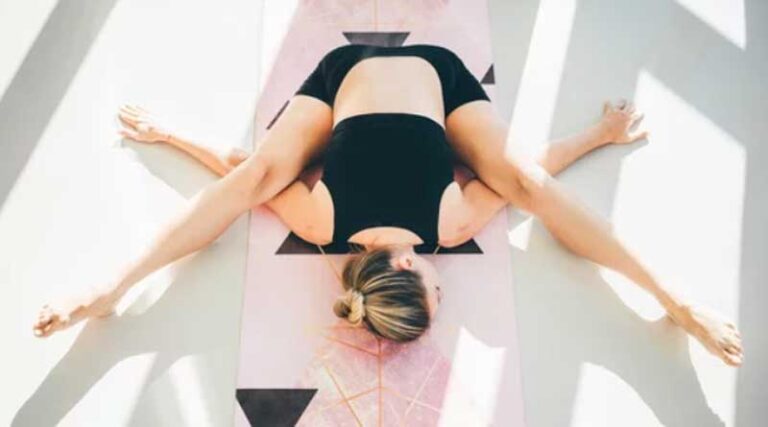
Exploring the Serene World Of Yin Yoga
Yin yoga is a practice where you hold poses for a long time. It provides a gentle and deep way to find peace.
Yin Yoga is a slow and calming type of yoga. It focuses on deep connective tissues, such as fascia, ligaments, and joints. This is done through long-held, passive poses.
Yin Yoga is different from styles like Vinyasa or Ashtanga. It focuses on stillness and letting go.
In Yin Yoga, you hold poses for 3 to 5 minutes or even longer. This helps you relax and release tension deeply.
Understanding Yin Yoga
Yin yoga is a calming practice. It focuses on the connective tissues, like ligaments, tendons, and fascia. This is different from more active styles of yoga, which focus on the muscles.
This practice involves holding positions for a longer time, usually from 1 to 5 minutes or more. This lets the body relax into the stretch and reach deeper layers of tissue.
The principle behind Yin yoga lies in finding stillness and surrendering to gravity. It encourages practitioners to let go of muscular engagement and control, aiming to release tension both physically and mentally.
Yin yoga helps you become more aware of yourself and your feelings. It teaches you to handle discomfort better. This practice can lead to clearer thinking and better emotional balance.
Health Benefits of Yin Yoga
- Improves Flexibility and Mobility: Yin yoga poses gently stretch and lengthen the connective tissues, tendons, and ligaments. Over time, this can enhance joint mobility and flexibility, allowing for a broader range of motion in the body.
- Stress Reduction and Relaxation: The slow, meditative nature of Yin yoga encourages deep relaxation and stress reduction. Holding poses for extended periods calms the nervous system, reducing stress and anxiety levels.
- Enhances Circulation: Yin yoga encourages the flow of energy (Qi) and blood throughout the body. Poses that compress and release specific areas help flush out stagnant blood and improve circulation.
- Yin yoga focuses on deep connective tissues.
- It targets the areas around joints and fascia.
- This is different from other types of yoga that focus on muscles. This can lead to improved joint health and reduced risk of injury.
- Stimulates Energy Flow: Yin yoga comes from Traditional Chinese Medicine. This practice helps to boost the flow of energy (Qi) in the body’s meridian pathways. Holding poses and applying gentle pressure to specific points can release energy blockages.
- Balances the Mind and Emotions: Yin yoga emphasizes mindfulness and introspection. Long holds help you develop mental clarity, focus, and calm. They also support emotional balance and stability.
- Yin yoga often encourages mindfulness and meditation. Holding poses for an extended time cultivates mindfulness, allowing practitioners to observe their thoughts and sensations without judgment.
- Stimulates Organs and Regulates Internal Systems: Yin poses compress and stretch various organs, promoting their health and optimal functioning. This can benefit the digestive, circulatory, and immune systems.
- Promotes Better Sleep: Practicing Yin yoga regularly can help improve the quality of sleep. The relaxation and calming effect on the nervous system can prepare the body for a restful night’s sleep.
Yin Yoga Poses – Yin Yoga Exercises
1. Child’s Pose (Balasana): Child’s Pose gently stretches the lower back, hips, thighs, and ankles. A restorative pose promotes relaxation and a sense of grounding.
2. Dragon Pose: Dragon Pose stretches the hips, thighs, and groin deeply. It helps in releasing stored tension in the hips and enhancing flexibility.
3. Butterfly Pose (Baddha Konasana): This pose helps open the hips and groin. Great for people who sit for long periods each day.
4. Sphinx Pose: Sphinx Pose works on the spine, chest, and abdomen. It helps relieve lower back pain and improve posture.
5. Reclining Butterfly Pose: This pose is great for opening the hips and groin. It also gives a gentle stretch to the lower back.
6. Seated Forward Fold (Paschimottanasana): This pose stretches the whole back of your body. It works on your spine, hamstrings, and calves. It helps you relax and become more flexible.
7. Saddle Pose: Saddle Pose stretches the thighs, groins, and abdomen, also stimulating the digestive organs and improving posture.
Yin Sequence
Now, let’s create a simple Yin yoga sequence incorporating the mentioned poses:
Child’s Pose – Hold for 3-5 minutes
- Begin on your hands and knees, with your big toes touching and knees spread apart.
- Sit back on your heels, extending your arms forward and lowering your chest towards the floor.
- Rest your forehead on the mat and breathe deeply into your back, allowing the spine to lengthen.
- Hold for 3-5 minutes, focusing on softening and relaxing into the pose.
Dragon Pose (Right side) – Hold for 3-5 minutes
- Begin in a lunge position with your right foot forward and your left foot extended straight back.
- Lower your hips and pelvis towards the ground, feeling a stretch in your hips and thighs.
- Keep your chest lifted and your spine long, finding a comfortable stretch.
- Hold for 3-5 minutes on each side, allowing the stretch to deepen with each breath.
Dragon Pose (Left side) – Hold for 3-5 minutes
- Repeat the same stretch on the left side.
Butterfly Pose – Hold for 3-5 minutes
- Start by sitting on the mat and bringing the soles of your feet together.
- Allow your knees to drop out to the sides, creating a diamond shape with your legs.
- Gently fold forward from the hips, keeping the spine straight and reaching towards your feet.
- Hold the pose for 3-5 minutes, focusing on deep, relaxed breathing.
Sphinx Pose – Hold for 3-5 minutes
- Lie on your stomach and prop yourself up on your forearms, keeping your elbows under your shoulders.
- Press the tops of your feet and thighs into the mat as you gently lift your chest and head, arching your back.
- Relax your shoulders away from your ears and keep your gaze forward or slightly upward.
- Hold for 3-5 minutes, breathing into the stretch in your lower back and chest.
Reclining Butterfly Pose – Hold for 3-5 minutes
- Lie on your back, bring the soles of your feet together, and allow your knees to fall outward.
Seated Forward Fold – Hold for 3-5 minutes
- Sit on the floor with your legs extended, hinge at the hips, and reach forward towards your feet.
Saddle Pose – Hold for 3-5 minutes
- Start by kneeling on the mat, then sit back between your feet, keeping your knees and feet hip-width apart.
- Slowly lower your upper body backward, supporting yourself with your arms or elbows on the ground.
- Relax into the stretch, feeling a deep opening in the hips, thighs, and lower back.
- Hold for 3-5 minutes, breathing deeply and surrendering to the pose.
What are the most used yin yoga poses
Yin Yoga includes deep, gentle stretches. Practitioners hold these stretches for a long time. This helps target the fascia, joints, and connective tissues. Here are some of the most commonly used Yin Yoga poses:
Most Used Best Yin Yoga Poses – Yin Yoga Asanas
Yin Yoga Poses For Beginners
- Butterfly Pose (Variation of Baddha Konasana) – Enhances flexibility in the hips, inner thighs, and lower back.
- Dragon Pose – A profound hip opener that targets the hip flexors and quadriceps.
- Caterpillar Pose (Seated Forward Bend) – Lengthens the spine, hamstrings, and lower back.
- Sphinx Pose – A mild backbend that expands the chest and fortifies the spine.
- Seal Pose – A more intense backbend compared to Sphinx, stretching the lower back and abdomen.
- Reclining Twist – Alleviates spinal tension and aids in organ detoxification.
- Shoelace Pose (Variation of Gomukhasana) – Engages the hips, outer thighs, and lower back in a stretch.
- Square Pose (Agnistambhasana or Fire Log Pose) – Facilitates hip opening and alleviates sciatic discomfort.
- Sleeping Swan (Yin Pigeon Pose) – A profound hip opener focusing on the glutes and outer hips.
- Frog Pose – Provides a deep stretch for the inner thighs and groin area.
- Melting Heart (Anahatasana) – Expands the shoulders, chest, and upper spine through stretching.
- Happy Baby Pose – Softly opens the hips while stretching the lower back.
- Child’s Pose – A soothing position that stretches the back and soothes the nervous system.
- Bananasana (Banana Pose) – Offers an extensive side stretch that elongates the spine and obliques.
- Dangling Pose (Ragdoll Forward Fold) – Stretches the hamstrings while relieving spinal compression.
Yin Yoga Stretches for Enhanced Flexibility and Deep Release
Yin Yoga emphasizes prolonged, gentle stretches that target the connective tissues, facilitating tension release, enhancing flexibility, and fostering relaxation. Here is a selection of effective Yin Yoga stretches organized by specific areas of focus.
1. Lower Body and Hip Stretches
- Butterfly Pose: Ideal for opening the hips and stretching the inner thighs and lower back.
- Dragon Pose: Targets hip flexors, quadriceps, and groin muscles.
- Sleeping Swan (Yin Pigeon Pose): A profound hip opener that focuses on the glutes and outer hips.
- Square Pose (Fire Log Pose): A stretch for the outer hips that alleviates tension in the gluteal area.
- Frog Pose: An intense stretch for the groin and inner thighs.
2. Spinal and Back Stretches
- Caterpillar Pose (Seated Forward Fold): A great stretch for the hamstrings and spinal alignment.
- Reclining Twist: Helps alleviate tension in the spine while aiding in organ detoxification.
- Melting Heart (Anahatasana): Expands the shoulders and upper spine.
- Bananasana (Banana Pose): Lengthens the side body and stretches the spine.
3. Shoulder and Chest Opening Poses
- Sphinx Pose: A gentle backbend that strengthens and opens the lower back region.
- Seal Pose: A deeper backbend to stretch both the lower back and chest area.
- Melting Heart (Puppy Pose): Opens the shoulders, chest, and upper spine.
- Thread the Needle Pose: Relieves tension in the shoulders and upper back.
4. Leg and Hamstring Stretches
- Dangling Pose (Ragdoll Forward Fold): Stretches the hamstrings while decompressing the spine.
- Caterpillar Pose: Offers a deep stretch for the hamstrings with a forward bend.
- Half Butterfly Pose: Focuses on stretching one side of the hamstrings and lower back at a time.
5. Full-Body Relaxation Stretches
- Child’s Pose: Eases lower back discomfort and opens the hips, promoting a sense of calm.
- Happy Baby Pose: Gently stretches the spine while opening the hips.
- Savasana (Corpse Pose): The ultimate position for relaxation, allowing for deep integration of the practice.
Conclusion
Yin yoga provides a calm path to stillness and self-discovery. It helps you connect more deeply with your body and mind.
Adding these Yin yoga poses to a sequence can create deep relaxation. They can also help release tension from both the body and mind. Take time for yourself, embrace the stillness, and let Yin yoga guide you toward a calmer and more centred existence.





